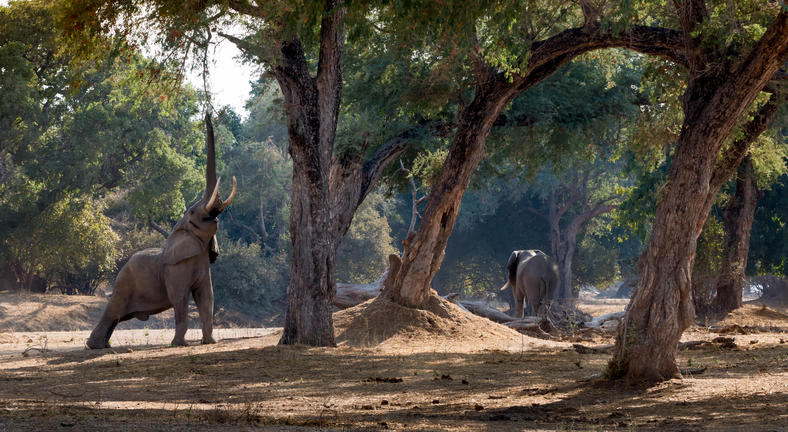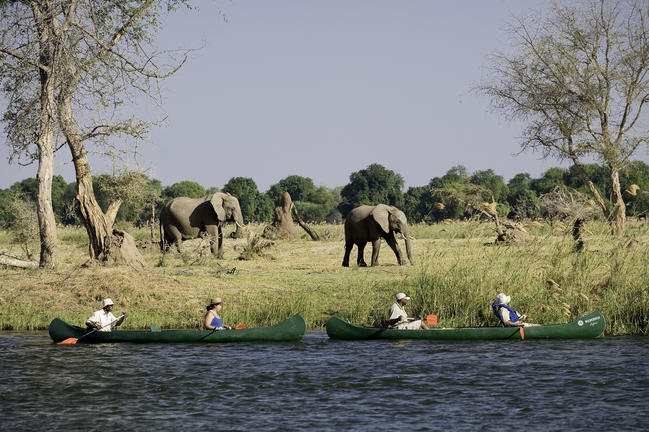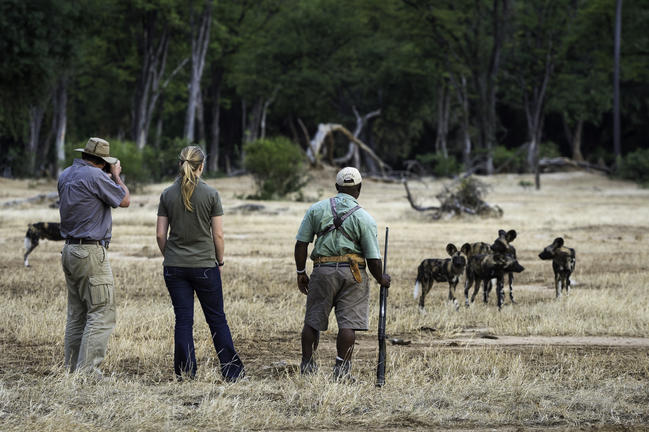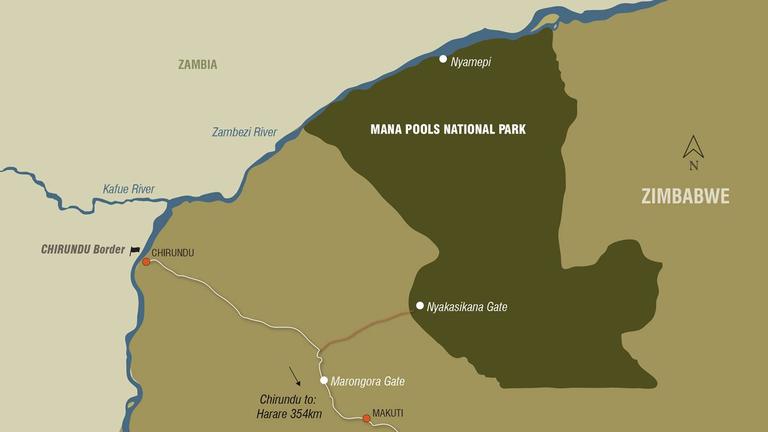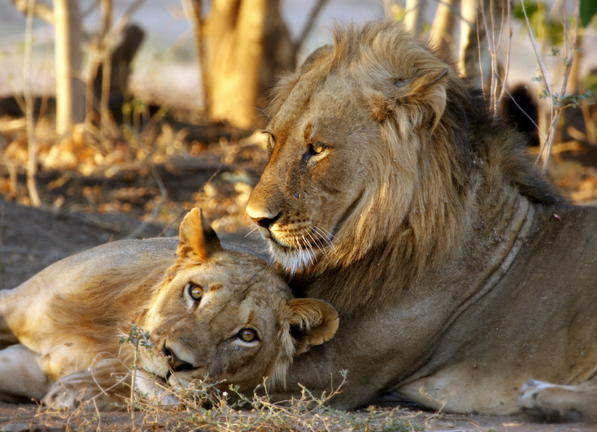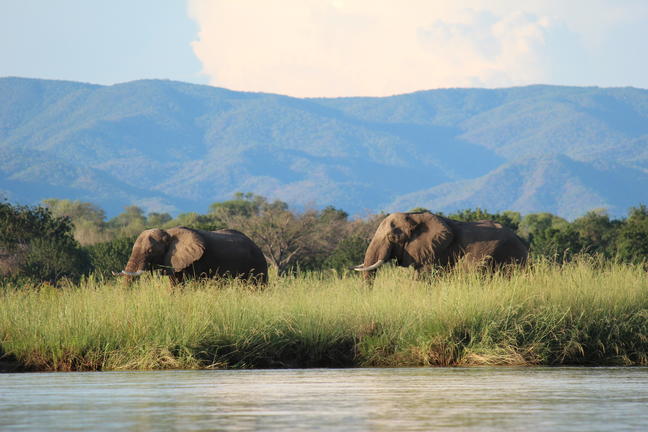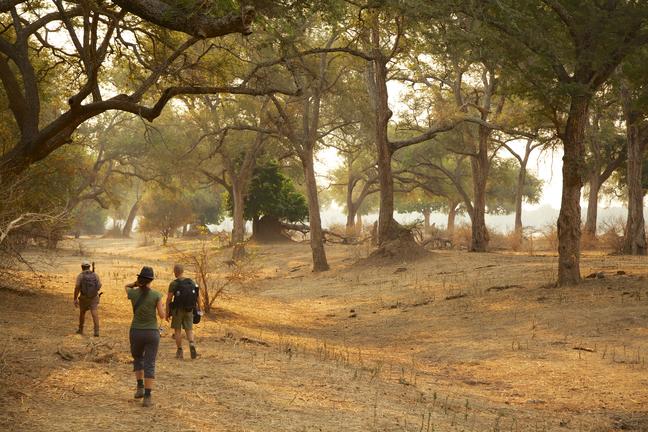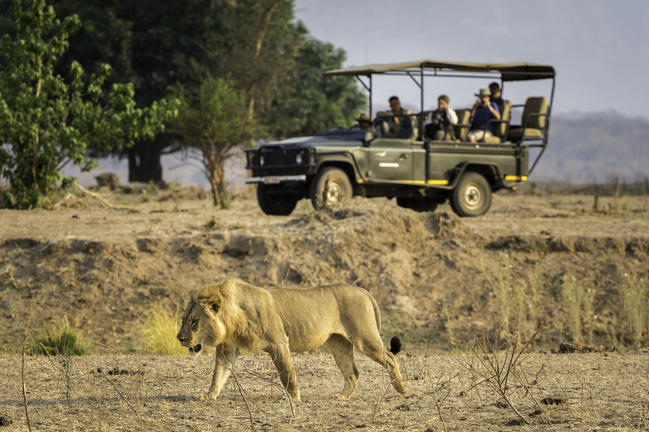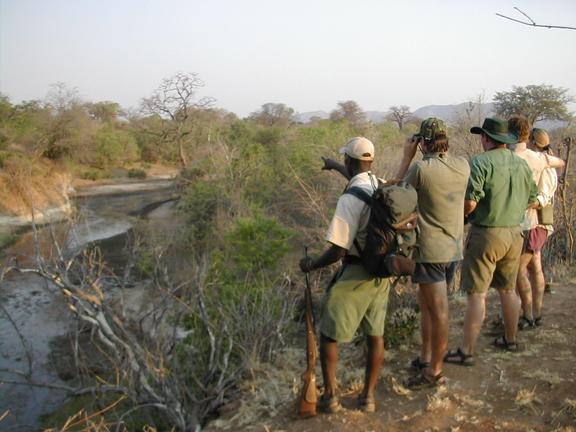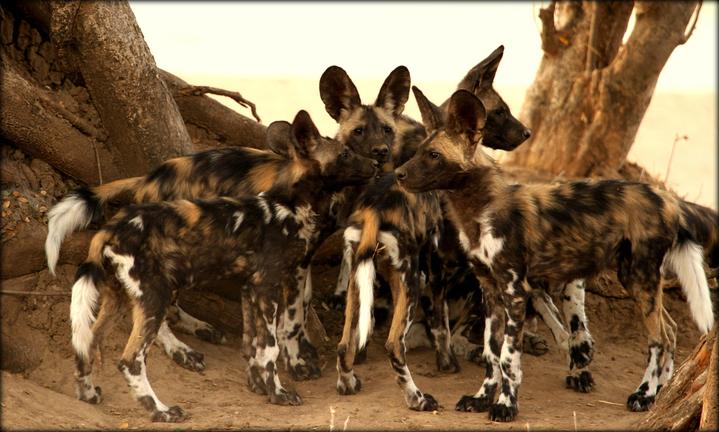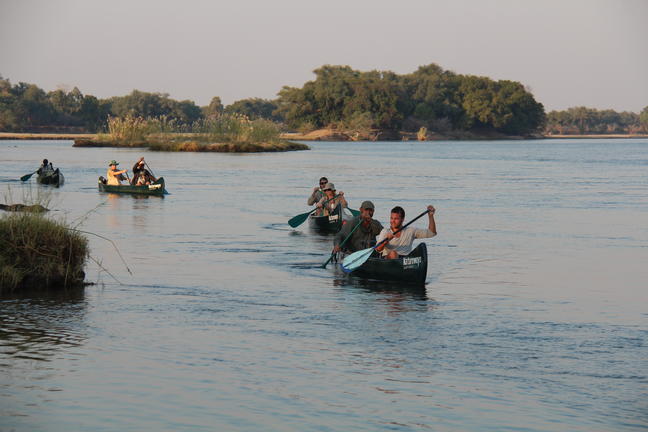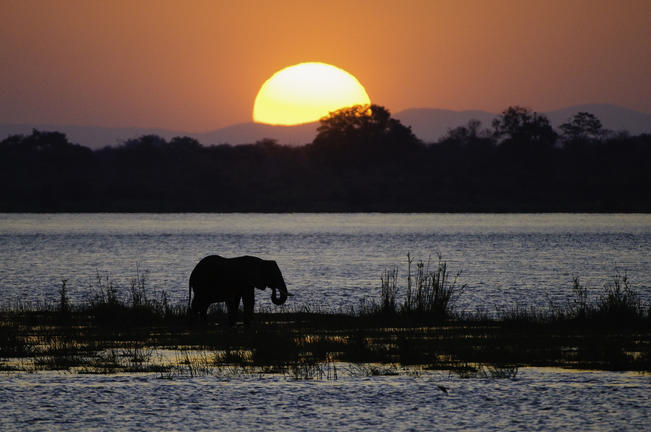It’s hard not to be dramatic when describing the grand beauty of Mana Pools. This park in the north of Zimbabwe is a unique oasis often described as a ‘garden of Eden’. It is a remote gem that leaves you awed and humbled by the landscape, a landscape that feels both eternal and wonderfully alive. Mana Pools is a designated UNESCO world heritage site.
The name Mana means four in the Shona language and comes from a series of four pools, remnants of oxbow lakes that run parallel to the river amongst the ancient floodplains for which Mana is famous. These wide green floodplains dotted with giant Albida trees edge the Zambezi river and offer breathtaking views of the purple-hued escarpment rising dramatically across the river. The floodplains attracts huge amounts of wildlife, especially in the dry season, and you’ll quickly get the sense of being one of a privileged few to experience this wild place.
Mana is known for its immense bull elephants and the sight of an elephant standing upon its hind legs to stretch for the seedpods of a giant tree upon the floodplain has become iconic. Mana raises goosebumps and leaves you with vividly remembered impressions: the sound of clashing ivory echoing across the valley while two massive elephant bulls fight; or sunrises that coax the smell of overnight dew out of the floodplains.
Mana Pools is not all about elephants; you can expect to see large numbers of plains game and if you are lucky the predators that follow them. Large congregations of grazing animals can be seen on the floodplains and you would be unlucky on a three-day stay to not see a predator.
Mana offers a choice of permanent camps, each with a unique perspective. Mana is wonderful location for walking and canoe safaris offering overnight stays in mobile, tented camps.
Habitats
Mana pools are known for the rich alluvial floodplains that line the Zambezi River. There is little undergrowth on the floodplains and they offer unbroken views and high animal numbers, which make them a safari goers dream. The same characteristics also makes these areas perfect for walking safaris. The Zambezi river is wide here and offers the opportunity for the adventurous to embark on multi day canoe safaris upon which you can get spectacularly close to the wild animals of the park.
As you head away from the river the land rises gently through mixed woodlands from ‘Mopane’ woodland to ‘Jesse’ bush and riverine forests. These wooded areas can offer sightings such as crested guinea fowl and nyala that you won’t find on the floodplains.
Seasonality
The dry season runs from about May through to October and this is the best time to visit Mana Pools. The lack of water in the wooded areas attracts large numbers of animals to the floodplains to graze and drink. The animal numbers increase as the dry season progresses however it can get oppressively hot towards October.
From November through to March the rains begin and animals head away from the floodplains and into the woodlands. Mana Pool’s permanent camps close in the rainy season when access becomes problematic and the majority of the animals move into the wooded hills and are harder to see. Many roads in the area close due to the rain and the humidity and insect numbers are high. However for the intrepid self-driver animals can still be sighted in the limited area you can access and Mana is ever beautiful and generous with her bounty.
Sightings
The elephant of Mana in particular are famous for their relaxed nature and their habit of standing upon their back legs to feed on high branches.
Mana Pools also has high numbers of buffalo, impala, kudu, eland, waterbuck, hippo, zebra, baboons and monkey. With these high numbers come accompanying predators- leopard, lion, spotted hyaena and African wild dog as well as cheetah. The Zambezi river is also well stocked with crocodiles best described as leviathan.
